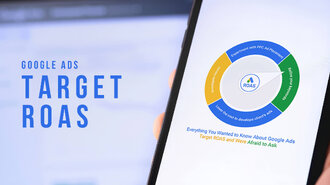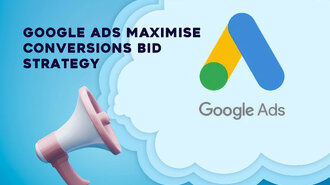Smart bidding strategies have been integral to every marketer’s arsenal, as their effectiveness can make or break a digital marketing campaign.
One such strategy is the Google Ads Target Impression Share, an automated strategy that aims to display your ads at the top of the search engine results pages. The system achieves this through bids applied to search ads on a case-by-case basis.

For beginners, this concept can be a bit daunting due to its strong focus on ad relevance. It’s natural to feel a bit unsure, but it’s important to overcome this before diving into your marketing campaigns.
So, to help you understand how the Target Impression Share strategy works, we have drafted a detailed article covering this bid strategy. Read on to learn.
Want to receive updates? Sign up to our newsletter
Each time a new blog is posted, you’ll receive a notification, it’s really that simple.
Understanding Automated Bidding
Fully automated bidding strategy systems are designed to streamline the bidding process so the system can automatically optimise bids for target keywords or ad groups. Since the system only requires an initial input to start working, it eliminates the constant need to monitor your Google Ads account’s bids.
There are three reasons to use Google’s automated bidding strategies: increased clicks, improved visibility, and a higher conversion rate. These benefits only increase as time passes, as the bidding system uses the performance data of each bid to improve its future bids.
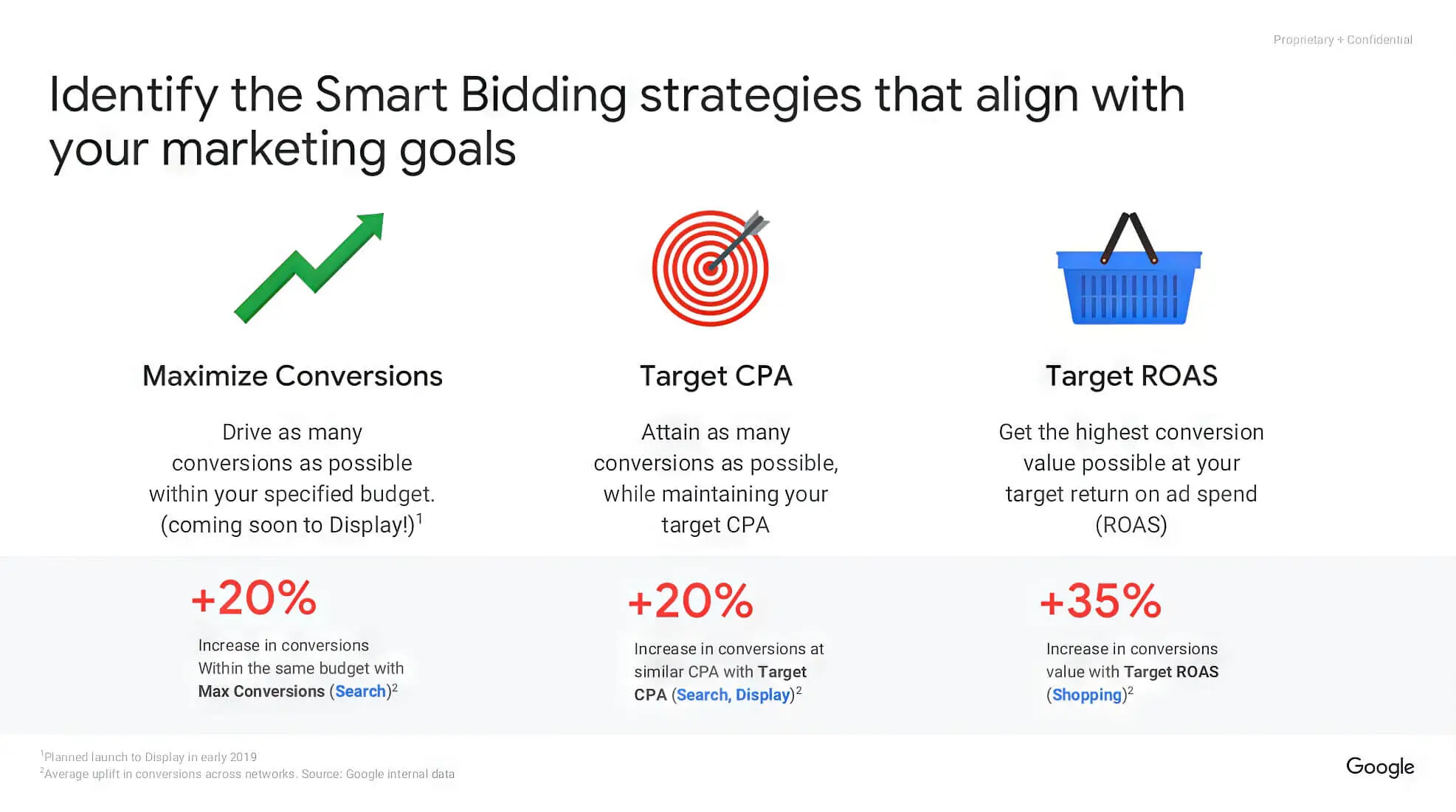
You can choose from a comprehensive list of six bid strategies in Google Ads alone, which are as follows:
- Maximise Clicks: Automatically adjust bids to maximise the number of clicks
- Target Impression Share: Aims to display ads on the top of SERPs
- Target CPA Bidding: Increases the conversion rate based on the target cost per action
- Target ROAS: Helps you gain conversion based on the return on ad spend (ROAS)
- Max Conversions Strategy: Gets as many conversions as possible within the budget
- Max Conversion Value: Gets the highest conversion value for the ad campaign
How Target Impression Share Works
Target Impression Share is an automated bidding strategy designed to improve ad visibility by positioning your ads above others in search results. It comes in two types: a standard strategy for single-brand campaigns, and a portfolio-level strategy for handling multiple campaigns.
The best way to use Target Impression Share is to use it in tandem with campaigns that heavily involve brand terms. For an ad that must be shown constantly, you can set the target impression share to the maximum and let the system do the rest.
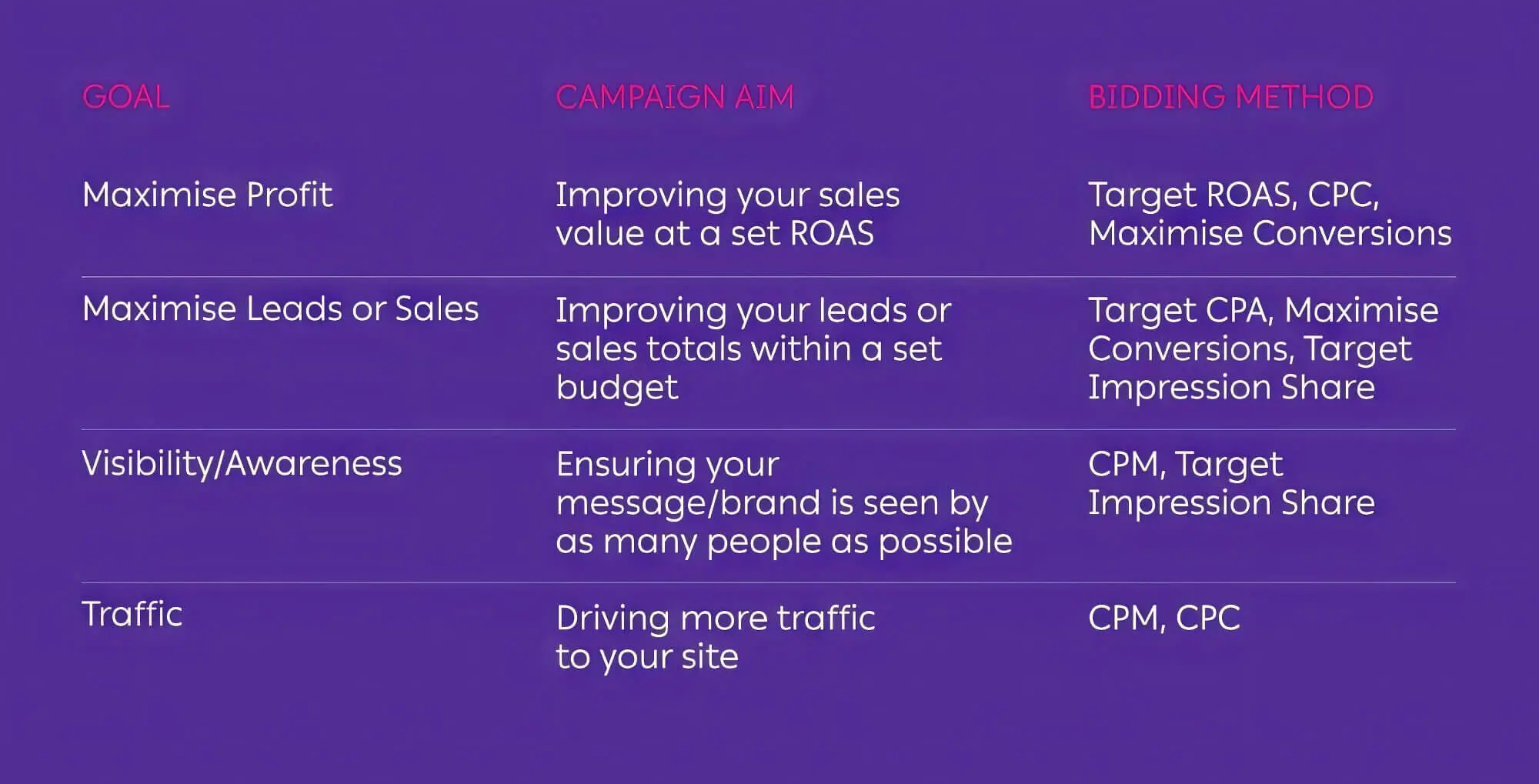
This approach results in changes to the system’s behaviour, attempting to show the specified ad in all of the auctions in the marketing campaign. Not only does this project your brand name, but it also helps with the max conversion rate.
However, it’s important to note that Target Impression share is not applicable in every situation. As the one running the campaign, you must continue to evolve your search campaign bidding strategy per the campaign’s goals.
Implementing Target Impression Share
Getting started with Target Impression Share is quite simple. Just a few clicks are involved. You’ll need to identify and select the settings that best align with your campaign goals.
You can set up Target Impression Share at the campaign level using the Settings option. Here, you can apply the target impression share formula to set your desired percentage on a scale that slides from 0% to 100%.
Determine whether you are at 90% impression share for the campaign. Starting from a lower value may be better if it hasn’t reached 90% yet. Continue to monitor the increase in your enhanced CPC after finishing the setup to gauge how much you should change the value.
Now, you can choose one of the three ad placements: the absolute top, close to the top and anywhere on the page. It’s usually best to choose the “absolute top” impression share setting to gain priority over competitors’ ads.
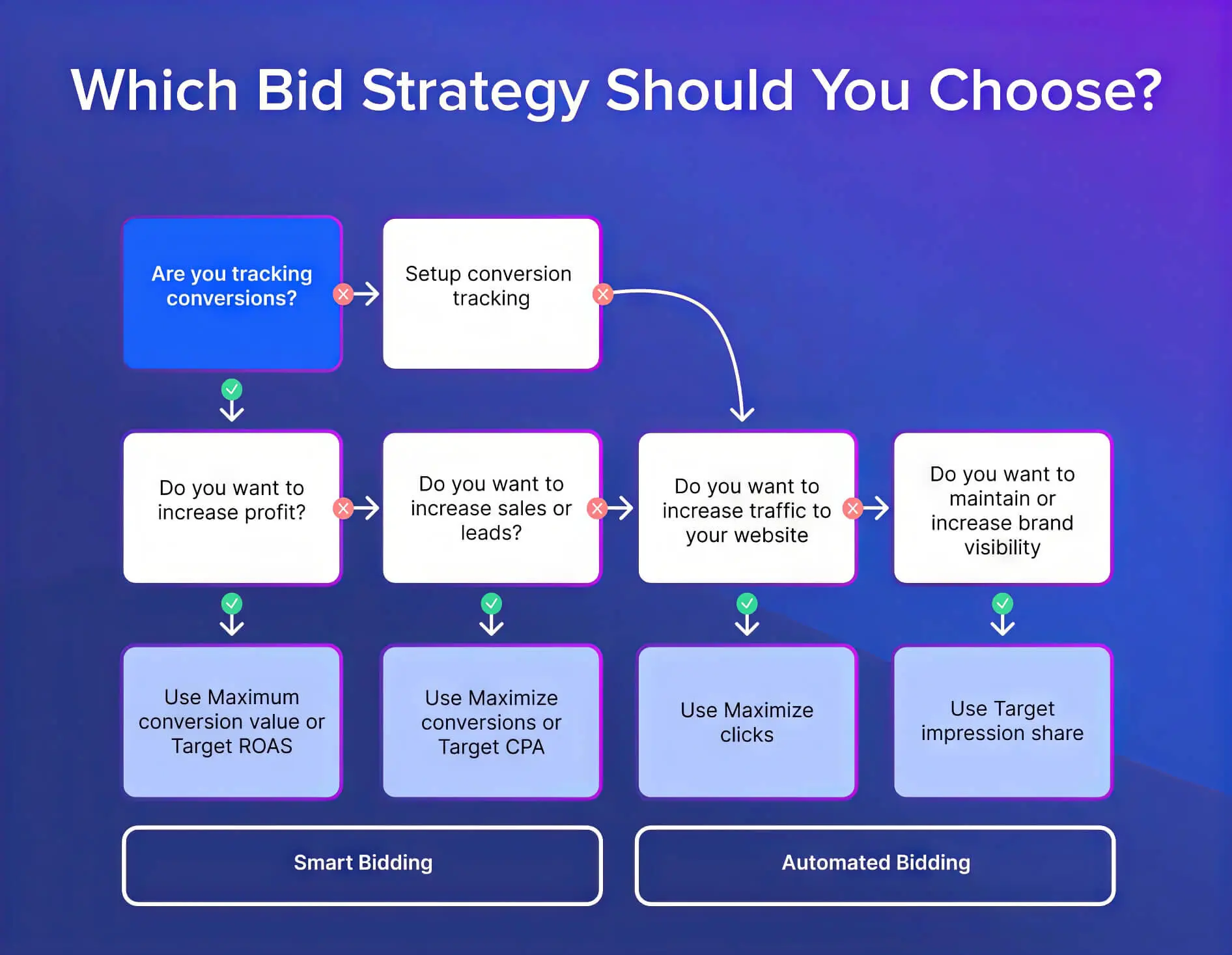
And finally, you can finish setting up Target Impression Share by choosing how much you are willing to pay in terms of cost per click. An excellent strategy to calculate this amount is to find out the average CPC for the last 30 days and double it. This ensures that the bid ends up being relatively low and costing you conversion volume or campaign blocks.
Furthermore, it’s essential not to overbid on your branded terms, as it can affect how much of the budget you can allocate for the campaign in the future.
With that, you can leave the system to run and monitor the launched bidding strategy. Continuously check the performance and average CPC bids for the first few weeks.
Optimising Target Impression Share
Optimising Target Impression Share into your campaign may require extensive testing for the most appropriate settings. Of course, there are a few considerations to remember that can help you find these settings more efficiently.
Here’s a brief breakdown of optimising the bidding strategy and effectively leveraging its benefits.
1. Carefully Consider Performance Goals
The importance of advertisers setting appropriate performance goals cannot be understated.
As a marketer, you may evaluate the performance of your bids with clarity while keeping the algorithm and revenue volume in mind. There is one caveat to this, which is a lack of efficiency.
If your ad campaign has a brand exposure or awareness goal, you may need to alter your performance goals to remain efficient. And since the bidding strategy only uses the placement option, per cent impression share target and maximum manual CPC bid limit, consider looking at the following key performance indicators:
- Search impression share hold
- Budget search lost IS
- Rank search lost IS
- Clicks
- Impressions
- Click-through rate
- Cost
- Average cost-per-click
Each of these key performance indicators is directly related to the target inputs of your bidding strategy. As such, this results in a more accurate depiction of the effectiveness of the automated bidding strategy.
For other key performance indicators not listed here, you can use Target Impression Share bidding in tandem with other bidding strategies.
2. Device Performance Is Important
Target Impression Share bidding has a notable impact on the device performance, which can vary depending on factors like your business industry, bidding strategy, etc. The content of CPC bids for mobile devices is typically lower than that of desktops.
Even though the CPCs of both device types have increased after implementing a bidding strategy, the gap between them is still quite notable. With the growing user base on mobile around the world, it’s essential to allocate a portion of your budget to target them.
That said, the total money spent on improving mobile clicks is higher than that for desktop. This is due to Target Impression Share bidding prioritising the optimisation of campaign-level impression share targets, leading to the system leveraging lower costs on mobile devices.
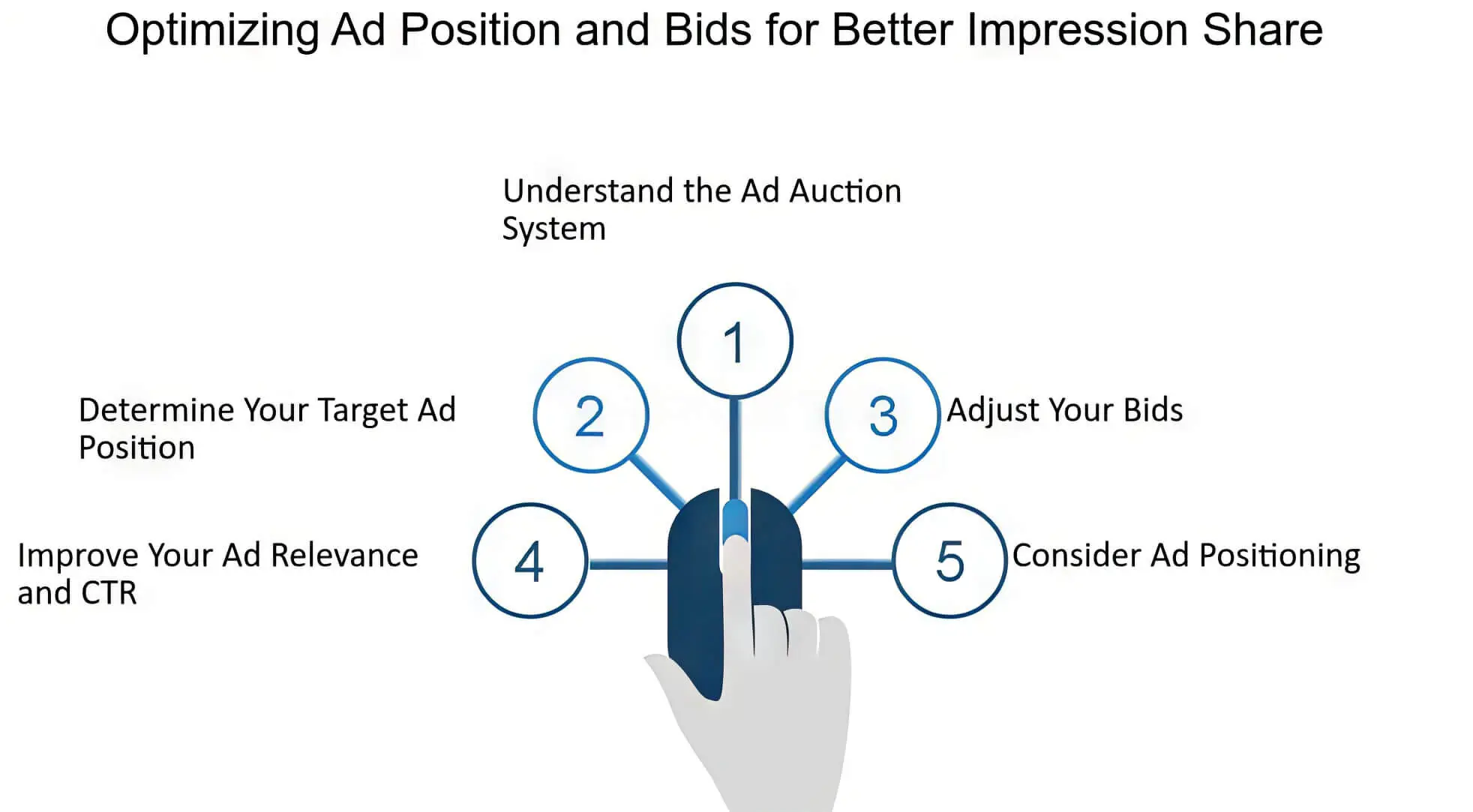
As a result, the system re-allocates the budget to prioritise mobile users and reach its defined goal that way.
So, if your bidding strategy aims for a campaign-level Target Impression Share test, it may result in your ad campaign heavily targeting mobile users. As such, you should keep the performance of each device type in mind while using Target Impression Share as a primary bidding strategy.
3. Choose The Right Placement Option
Ad positioning is a crucial decision to make for your ad campaign, as it directly impacts how many people view and click your ads.
You should select one based on your campaign strategy from the three options available (anywhere, close to the top, and at the absolute top of the page). For example, opting for the ‘absolute top’ of the page is usually best unless you are testing certain ad copy variations.
Be sure to examine what your competition is doing for similar product or service offerings and adjust your search page area options accordingly.
Benefits Of Using Target Impression Share
By using Target Impression Share bidding, you will be able to leverage six distinct benefits. These benefits can apply in various situations, making the bidding system a reliable way to improve the performance of your ad campaign.
Let’s explore these benefits briefly.
1. Improved Brand Visibility
Target Impression Share helps your brand improve its visibility and find a larger target audience through a target percentage-based slider.
By setting it at a higher value, you can grow your brand’s presence at the top or close to the top of the search engine results page. Not only does this improve the brand’s visibility, but it also helps increase brand awareness.
2. Ad Ranking Improvements
Target Impression Share bidding is helpful if your ad campaign is making liberal use of brand terms. These terms often need to be boosted for visibility, where you can use the Target Impression Share slider.
When set at 100%, Your ads will appear on all of the searches related to the campaign.
3. Getting Ahead Of The Competition
Target Impression Share can help you stay ahead in a competitive scene through budget reallocation and smart bidding. Target Impression Share can achieve this by increasing the frequency of impressions and adjusting the bidding aggressively.
This means potential customers will see your ads more often, leading to more clicks than your competitors get.
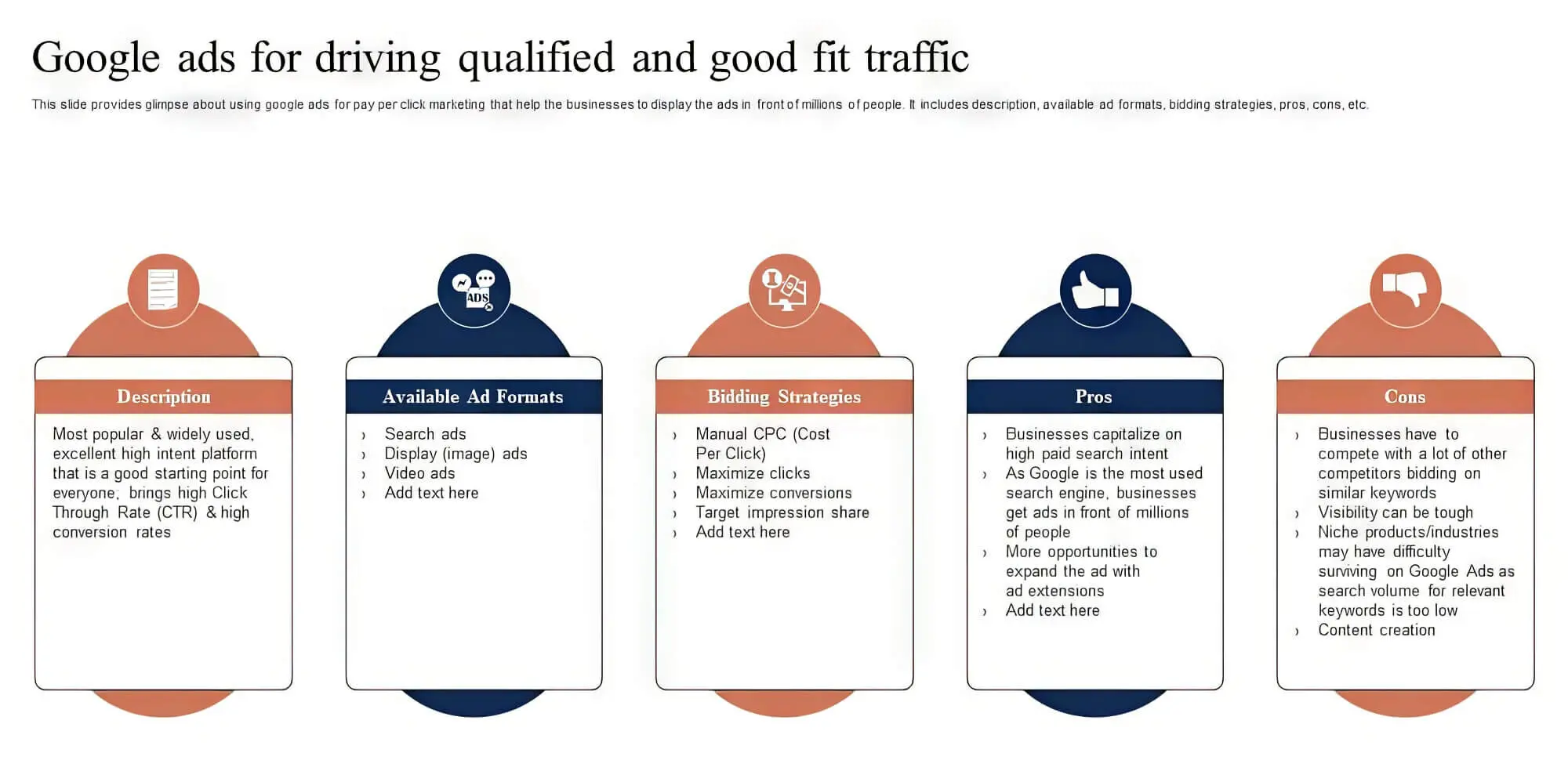
4. Smart Budget Allocation
If you’re working with a tight budget, Target Impression Share can help manage your overall spending.
You can use the bidding system to prioritise high-value impressions while using the remaining sum to target low-value ones. Set a target for the percentage of eligible impressions you hope to receive, and the system will take care of the rest.
5. Ad Placement Control
The Target Impression Share system gives you more control over the position and frequency of your ads on a search results page. You can plan accordingly and make existing bid adjustments to your advertising strategies based on the data provided by the system.
6. Helps You Achieve High Keyword Quality Scores
Target Impression Share can help you keep track of keyword scores and improve them as necessary. This is particularly useful when a high keyword quality score is difficult, commonly seen when a search campaign targets competitor-focused campaign keywords.
A Target Impression Share bidding strategy can help you cover the gap left by the keyword score and gain ground over competitor-branded keywords.
Maximise Your Impact, Master Your Bids
Target Impression Share is a great strategy that you can use in tandem with other strategies to maximise the reach of your Google Ads campaigns.
Its role is crucial for building brand image and raising awareness surrounding it. You can adjust your bidding strategy to gain priority in SERPs based on your advertising goals, target audience, budget, and competition actions.
Keeping a close eye on all the metrics associated with Target Impression Share is essential. You can achieve your advertising goals while adhering to budgetary bid limits.

